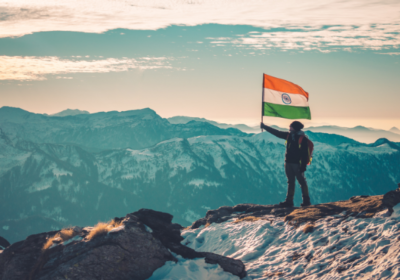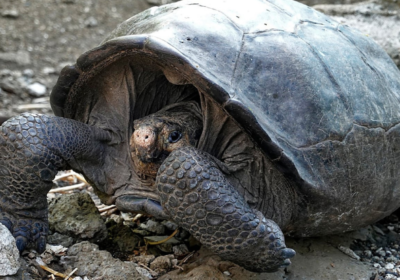A volcano is an amazing part of the Earth’s surface. The sight of red hot liquid oozing out from the top of a mountain is astonishing as well as terrifying. We know that this red substance coming out of volcanoes is called lava. What else do we know about volcanoes? Let us check out some interesting facts about volcanoes.
Lava and magma
We use both these terms in connection with a volcano. Both lava and magma are liquid substances comprising of molten rocks. They are formed inside the Earth’s crust due to the extreme heat from the core.
What is the difference between the two? When this molten rock is stored inside the Earth’s surface, it is called magma. When the magma flows out of the surface of the Earth through a volcanic eruption, it is called lava.
Types of volcanoes

Based on their state of existence, volcanoes are classified as dormant, active, and extinct. Active volcanoes are the ones which have recently erupted. Dormant volcanoes are those which have erupted in the past, but have remained quiet for a long time. Extinct volcanoes erupted very long back in history, but are not likely to erupt in the future.
Why are volcanoes important?
A volcanic eruption is feared by all who live in the vicinity. But volcanoes are beneficial to the Earth in many ways. A volcanic eruption causes its ashes to spread in the nearby areas. These ashes contain several minerals. As a result, the soil becomes fertile.
Volcanic slopes are the breeding grounds for several rare species of plants. They also help to cool the Earth by relieving it of the heat built up inside the crust. Volcanic deposits are used are building materials too.
Volcanoes and Pumice
Did you know that the pumice in your cosmetic kit is a contribution of volcanoes? Pumice is in fact a volcanic rock which is highly porous and light-weight. It is the only rock that floats in water. Apart from being used for beauty and personal care, pumice has a number of other uses. It is used in medicines, cement manufacturing, water filtration and several other things.
Warning signs of a volcanic eruption

There are several tell-tale signs which will let you know that a volcano is likely to erupt. When any of these warning signals are received, people living in nearby areas are advised to evacuate.
- There may be an increase in the intensity or frequency of seismic activity in the area. This means that minor earthquakes might occur in the nearby areas.
- There may be an increase in the fumes or heat emitted from the volcano.
- The volcano might appear bulged or slightly inflated.
Dangers of volcanoes
One of the most interesting facts about volcanoes is that the lava flowing out is the least among its dangers. If you thought that the red hot liquid will gobble you in seconds, you are wrong. Lava normally flows slowly and so, you can easily outrun the flow. But it can inflict serious damage to buildings and trees around.
Gases expelled during volcanic eruptions are harmful for humans, especially for those who suffer from respiratory illnesses. During an eruption, even rocks are hurled out from the volcanoes which can cause serious injuries to those on the path.
Volcanoes and Ring of Fire

Among the interesting facts about volcanoes, Ring of Fire is an underrated one. Ring of Fire is a horseshoe-shaped area in the basin of Pacific Ocean where more than 75% of the world’s active volcanoes are present. It is formed as a result of movement of tectonic plates along the surface of Earth. Most of the active volcanoes in countries such as Chile, Bolivia, Russia, Japan, and Canada are located along this region.
Largest active volcano on Earth
Mauna Loa located in Hawaii in the United States is the largest active volcano in the world. It is one of the five volcanoes that constitute the Island of Hawaii. It is a gently sloping volcano with a volume of approximately 18,000 cubic miles. Although this is not the tallest volcano, it is the largest in terms of volume.
Mauna Loa has been erupting for around 700,000 years. But the eruptions are not explosive in nature. The magma from this volcano has given birth to the island chains in Hawaii. It took millions of years to form these island chains.
Largest volcano in solar system
Here is a surprise element in the interesting facts about volcanoes. We just spoke about the largest volcano on Earth. But what about the largest volcano in the solar system? It is not on Earth! Olympus Mons on Mars grabs the title of largest volcano in the solar system. It is also the tallest mountain in the solar system.
Olympus Mons has a height of around 22 kilometers. This means that it is two and a half times more than the height of Mount Everest! It was formed as a result of lava flows over a long period of time. There is less tectonic movement on the surface of Mars. As a result, lava flows happened repeatedly in the same area, and Olympus Mons grew to a huge size.
Oldest active volcano on Earth
It is thought that Mount Etna in Italy is the world’s oldest active volcano. Though there is no concrete evidence to support this, this volcano has records of eruptions dating back to 1500 BC. In view of the long history attached to the volcano, it has been given the UNESCO World Heritage Site tag.
Mount Etna is one of the most active volcanoes around the world. It is constantly in a state of turbulence. Due to continuous eruptions, the area has fertile soil. Slopes of Mount Etna have a good amount of vineyards and orchards.
Deadliest volcanic eruption in history
The deadliest volcanic eruption on record happened in 1815 when Mount Tambora, a volcano in Indonesia erupted. The sound of the explosion caused by the eruption was heard 2,000 kilometers away. More than 70,000 people were killed in this devastation.
The aftermath of this eruption was deadlier. Volcanic ashes totally blocked sunlight in the region. There occurred a climate change across the globe. The following year was declared as a ‘Year Without a Summer’ and there was an agricultural crisis in the entire northern hemisphere.
So these were some interesting facts about volcanoes that you never thought about. Do you wish to read more such interesting pieces? Head to our Fascinating Facts section.
Here’s Something You Might Like
As a participant in the Amazon Associates Program, Science4Kids may earn from qualifying purchases.




